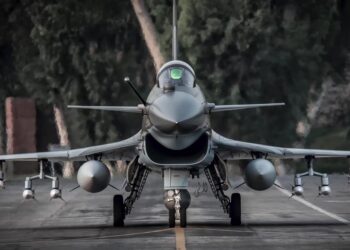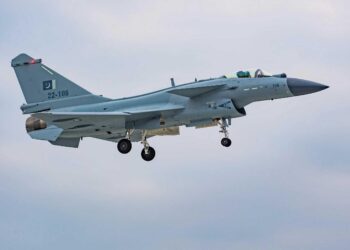WASHINGTON: Everything in Afghanistan – including combating improvised explosive devices – is made more difficult because the nation is at the end of a long and complicated logistics trail, Undersecretary of Defense Ashton B. Carter said today.
Carter, who has charge of acquisitions, technology and logistics provided insight about his office during a Pentagon roundtable meeting with reporters today. He said there is no higher mission than devising ways to counter the IED threat.
“Getting things into Afghanistan, which we need to do as quickly as we possibly can do it, is very difficult,” Carter said. “Next to Antarctica, Afghanistan is probably the most incommodious place to be trying to fight a war. It’s landlocked, rugged, the road network is much thinner than Iraq and it has fewer airports.”
Added to the challenge of supplying Afghanistan is the need to get military materiel out of Iraq on deadline, making for an incredibly complicated process.
Some of the things that have worked well in countering roadside and car bombs in Iraq — intelligence, surveillance and reconnaissance aircraft, mine-resistant, ambush-protected vehicles and additional infrastructure — are more difficult to get into an austere environment like Afghanistan.
“It’s not a matter of just make it and fly it over there,” Carter said, citing the MRAP vehicles’ need for concrete slabs as an example. “There’s no place to get concrete in Afghanistan, you have to get it from Pakistan,” he said. “We can produce MRAPs faster than we can introduce them to soldiers and Marines.”
The soldiers and Marines need to get the vehicles, learn to drive them, learn their strengths and weaknesses and then get into the fight with them. “For want of a nail – everything is like that in Afghanistan,” Carter said, noting the old proverb that underscores how lack of even the smallest things make Afghanistan a challenge.
Carter and Marine Lt. Gen. John Paxton, director of operations for the Joint Staff, are in charge of the Pentagon’s new Counter IED Task Force. “When I was offered this job by Secretary [Robert M.] Gates, he said the troops are at war, the building is not and especially acquisition, technology and logistics,” he said. “I’ve tried to change that.”
Carter noted that Gates wants more efficiency in countering IEDs – the leading killer of U.S. forces in Afghanistan. “The secretary would like the department as a whole to quickly get up to the learning curve that took a number of years in Iraq,” he said. “That means to bring together all the pieces that are already working on the problem.”
This includes the Joint Improvised Explosive Device Defeat Organization; the Intelligence, Surveillance and Reconnaissance Task Force; the MRAP Task Force; various organizations in theater and the service labs and operators, Carter said.
“All are doing good work, but the charge is to get them all together and make the whole greater than the sum of its parts,” he said.
There is no silver bullet against IEDs, the undersecretary said, and there is no one material solution. His group is looking at anything and everything that can be effective – now. “It’s a six-month effort,” he said. “So it is intense, and won’t do something that will make us better in two years, but two, four or six months from now,” he said.
The logisticians have done a great job in supplying American troops with what they need, when they need it, DoD officials said, but the next months will challenge them. Between 50,000 and 60,000 U.S. soldiers and their equipment will leave Iraq after national elections there next year. By the end of 2011, all American forces are to be out of Iraq.
Among the logistics questions that need to be answered is, does the equipment come back to the states to reconstitute the Army? Does it go to the Guard and Reserve? How much should go directly to Afghanistan? How much should stay in pre-positioned stocks in Kuwait? How much should go to Iraqi security forces?
It is not as simple as loading it aboard a ship or plane and taking it away, Carter said. “It’s quite a challenge,” he said. “You have to figure out where everything goes that is going out.”









